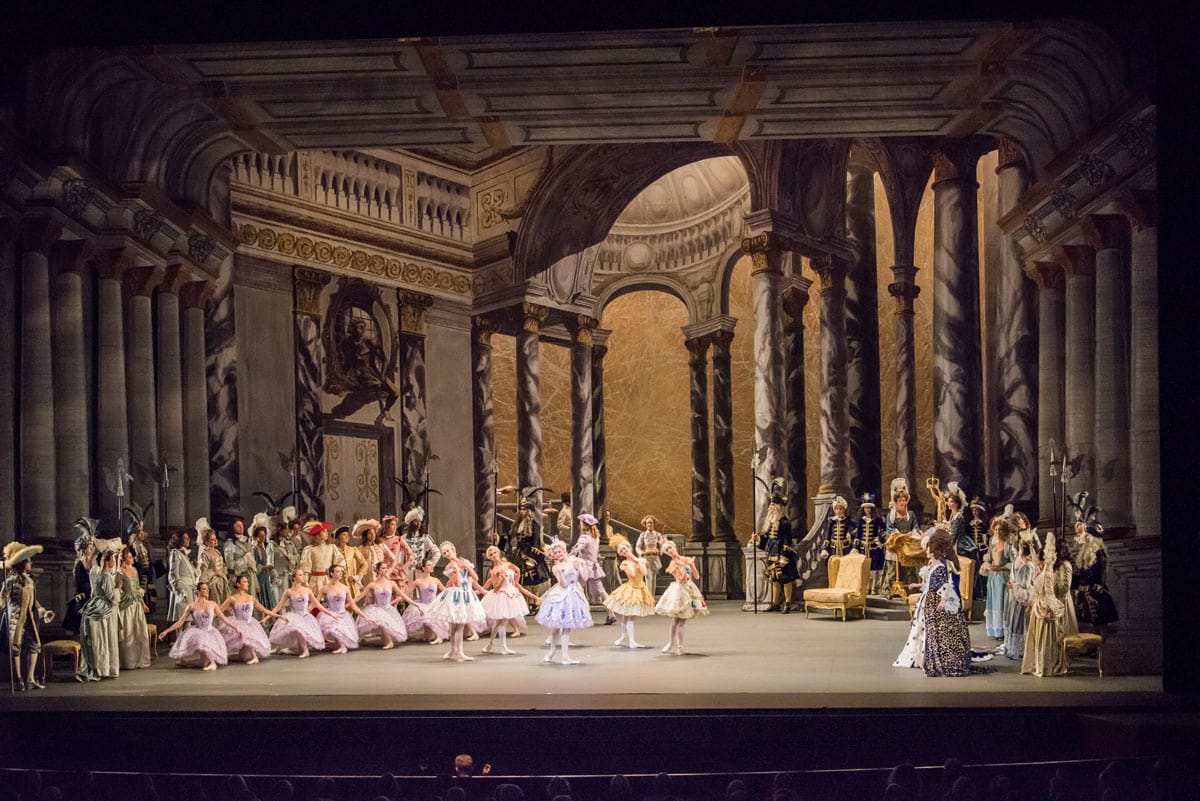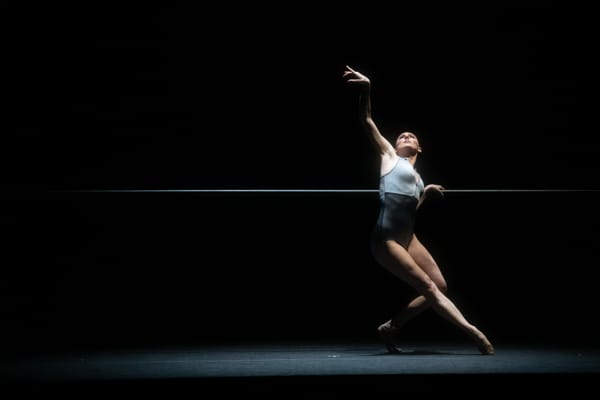Wide Awake

"The Sleeping Beauty"
American Ballet Theatre
Metropolitan Opera House
Lincoln Center
New York, New York
July 3, 2019, evening
Unlike Aurora, Alexei Ratmansky's 2015 production of Petipa's "The Sleeping Beauty" doesn't believe in long naps, and Ratmansky has added and subtracted elements over its brief life. This scrupulous attention to detail seems to keep the company awake and fresh, and the dancing, highlighted by Hee Seo's lyrical Aurora and Aran Bell's noble prince, was enticing. Ratmansky's version is a more gentle Beauty than the grand "good versus evil" approach of many of the after-Petipa versions, and he, following Petipa, invites Carabosse to the wedding (without her rats). Love triumphs, but selfishness, greed, and general meanness can still lurk in the background.
Seo gave her Aurora a nuanced arc, changing from act to act, as she grew from a youthful, happy princess in to a yearning dreamer, and finally into a triumphant and loving wife. The role is not just a technical challenge, it is a dramatic one as well, and Seo's Princess was natural, believable, and completely lovable. The technique and the drama cannot really be separated, of course, as the choreography encapsulates the character. The Rose Adagio, that Mount Everest of variations, is not just a balancing competition, it sums up the young Aurora's joy, confidence, and beauty. Dancers can balance until the four Princes give up but if Aurora doesn't look happy, the dance is meaningless. Seo's balances were secure and she didn't hold on to them for dear life, concentrating more on bringing her hand down with ease, which gave them a gracious, generous air. She reacted to everyone on the stage (Ratmansky has a lovely moment when Aurora runs over to her friends for a cheerful bit of female bonding). She used her face exceptionally well, often raising it to the light, as if her happiness were flowing upwards.
Seo's innate lyricism gave a luminous gleam to the vision scene, though her Aurora on the half-shell balance did come unstuck. Ratmansky/Petipa gives the scene a more dramatic tinge than the usual white act abstract ballet approach, as Aurora pleads with Désiré to come and wake her up, and Seo seemed to pull him into the action. (It is a shame that the prince doesn't wear the traditional heeled boots -- it is so much more magical to have a human wandering around those nymphs than a dancer in ballet shoes.)
Aran Bell, a 20 year old corps dancer, had been scheduled to make his debut as her dream lover; this was actually his second performance, as he replaced James Whiteside the previous night. As a teenager, Bell won a number of ballet competitions and has a (comparatively) long performance background (I saw him in 2013 perform in a small company run by Craig Salstein and noted his "elegant beats and noble line") though there was nothing of the Infant Prodigy in his Désiré. He moved with a dignified and natural grace in the hunting scene, polite but isolated; even at 20 he can command the stage standing still. The elegant beats and noble line are still around, which he showed off in the fiendishly difficult 1905 Act III solo, with its creamy upper body and flashing petite batterie.
This year Ratmansky slightly revised the grand pas de deux; the fish dives added in the 1921 production have been replaced by a more sedate pose based in rediscovered drawings of the dance. Aurora now leans back and shares a quiet moment with her Prince and the now traditional final fish dive is an elegant two-handed low dip, as the dancers ease into position, floating, it seemed, on the music. After years of seeing the fish dives punctuating those final chords, the softer, gentler choreography takes some getting used to, but it has a delicate sweetness that is easy to love.
So too does the overall style of the ballet. After so many romps through the after-Petipa ballets with their mishmash of styles ("Le Corsaire" anyone?) it is a joy to surrender to the artistic coherence and soft beauty of this production. The Prologue, with its sublime geometry (circles merging into lines, reforming into other circles) is like being inside an animated Faberge egg, as close to perfection, I suspect, as this world allows.

Devon Teuscher's Lilac Fairy presided over the Prologue with a dignified majesty, though her white wig did tend to wash out her features. Ratmansky's Lilacs do not dance the familiar Lopukhov solo with the Italian fouettés, but an earlier version, full of tricky turns and elegant pauses on one leg (a recurring motif in the ballet); Teuscher gave it an elegant sheen. Her mime, especially in the counter curse, was not as strong as it could have been and I missed the slight ironic smile that often accompanies the little first position bow to Carabosse, but I loved her gentle questions when greeting Désiré, as if she had asked others before and wasn't sure of his answers.
Keith Roberts was a sulky, hulking Carabosse, both angry and ineffectual. The many other roles were by and large very well danced, though the Lilac Fairy's Prologue attendants could use some more rehearsal --t heir heads seemed to turn a bit randomly. Skylar Brandt and Gabe Stone Shayer were gloriously musical Blue Birds. Christine Shevchenko absolutely sparkled as the Diamond Fairy, and Zimmi Coker as Red Riding Hood and Katherine Williams as Cinderella both gave their brief little vignettes charm and pathos. "The Sleeping Beauty" is so much more than its main characters, vital though they may be, and no one was asleep, except Aurora and she was having a wonderful dream.
Copyright © 2019 by Mary Cargill



